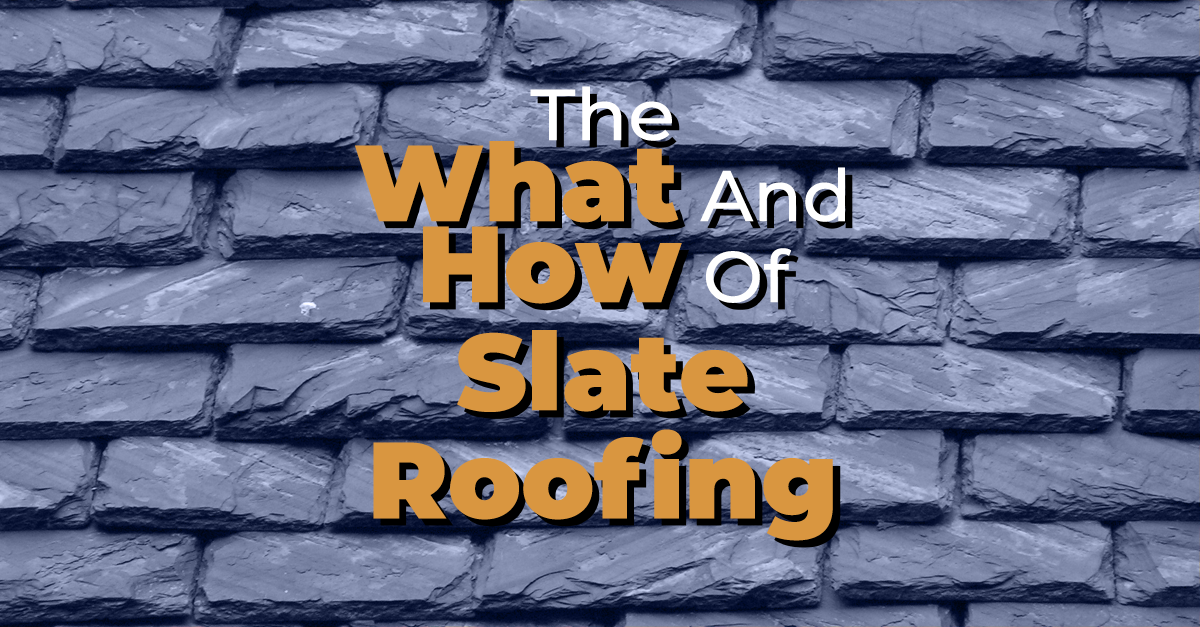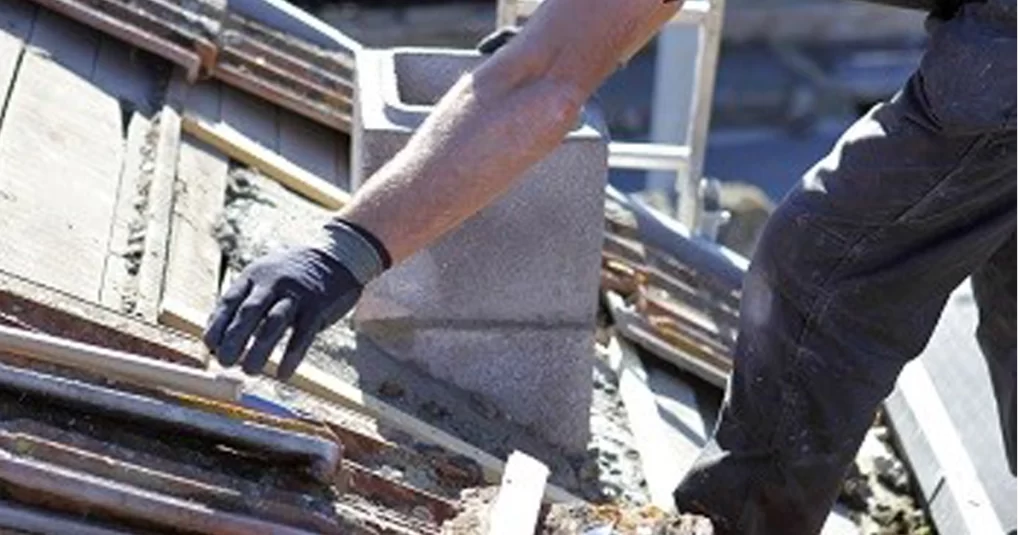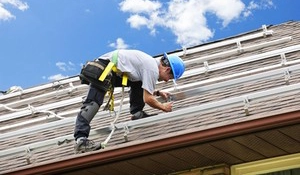
You’ve heard slate referred to as “historical roofing,” but that doesn’t mean it’s simply old. Slate truly has an interesting history:
What is Slate?
Slate is a layered, fine-grained rock originating from shale-type sedimentary rock made of volcanic ash or clay. The layering formed from fine-grained clay that was compressed over time. Natural slate can be many colors, from gray to purple, green, or greenish-blue.
History of Slate Roofing
- During the Roman period (43-410AD) in the area of Great Britain, slate was used as roofing for Fort Caernarfon. It was also called “Segontium,” as a reference to the Segontiaci tribe, briefly mentioned in the writings of Julius Caesar.
- Slate is most notably referenced as the roofing material used for a Northern Wales church in 1287. It was a popular roofing material because it is weather- and fire-resistant. It was an expensive process, but slate became more affordable in the 1800s.
- In the 19th century, the most productive quarries were northwestern Wales. Blaenau Ffestiniog was the site of the Oakeley slate mine, the largest in the world. Slate was used primarily for roofing but also worked well as flooring, heavy tabletops or worktops, and cemetery headstones.
- In the U.S., slate quarrying began in Pennsylvania during the 1800s. It was discovered Vermont has some of the highest quality slate in the world. Slate roofing peaked in the early 1900s but later declined, as asphalt shingles and other roofing materials became available.
Everything Old is New Again
Today, slate roofing is making a comeback. Slate roofing is seen as a valuable piece of U.S. history and its preservation has become a priority. Because it appears more attractive and has strength and durability, many new homes are being built with slate roofing once again.
U.S. slate colors include:
- New York red
- Pennsylvania black
- Vermont gray
- Vermont gray-black
- Vermont green
- Vermont mottled purple
- Vermont purple
- Vermont sea green
- Virginia blue-black
From Earth to Roof
Slate is removed from quarries in large blocks. The blocks are then split according to their grain and cleavage (Slaty “cleavage” refers to the slate’s foliation.). The blocks are split into smaller pieces using a diamond saw.
The smaller pieces are then split into roofing slates using hammers and chisels. The edges are trimmed to the size specified and nail holes are punched (or drilled) into the slate tiles. Roofing slate isn’t sold without nail holes. Standard U.S. sizes for slate roofing are from 6″x12″ to 14″x24″ and 3/16″-1/4″.
Copper or stainless steel nails are preferred for slate roof installation. Slate re-roofing is becoming more frequent as U.S. historical 200-year-old slate roofs need updating.
Experienced roofers can create true works of artistry using slate roofing tiles. Dated roofs are popular, but some of today’s slate roofs are becoming landmarks in design and color variations.
Simulated Slate: Is Faux for You?
Discriminating homeowners want “the real thing.” After all, your property may be your biggest investment; preserving and increasing its value is logical.
When first introduced, simulated slate had just enough disaster stories to steer roofing contractors and their clients away from even considering it. Slate lookalikes are now gaining acceptance in the U.S. Renovation guidelines even exist for simulated slate roofing for historic properties.
If you are building new or considering re-roofing, Consumer Reports’ August 9, 2019 Roofing Buying Guide is filled with valuable information. It rated types of roofing materials including simulated slate:
“The composite material looks like the real thing, even close up, but costs a lot less,” says Consumer Reports. “And it weighs about the same as asphalt, so no need to beef up the roof structure…”
While real slate requires a skilled roofing contractor, ‘fake’ slate can be installed by almost any roofing company. Expect your simulated slate to last 20-50 years.
Yes, Virginia…Stevens Roofing Corporation is Best
No matter what your budget, your local roofing contractor should be able to help you choose the best possible materials for a reasonable cost. The true measure of any business is longevity. Stevens Roofing Corporation has been serving area families for over 70 years (That’s almost half the lifespan of a slate roof), and we’ll be here to serve your children, too.
We believe slate roofing has the benefits of beauty and longevity. In areas of weather extremes (like Virginia) slate roofs are a smart choice for homeowners. Let’s discuss the possibilities of unique slate roofing for your home. To learn more, call 757-489-8791 or contact Stevens Roofing Corporation today.





